I’ll never forget the first Marketo case study I had to write. I was staring at spreadsheets full of data, completely overwhelmed, wondering how the hell I was supposed to turn numbers into a story that would actually convince someone to invest in marketing automation. Sound familiar?
Here’s the thing about Marketo case studies – they’re basically your marketing team’s secret weapon because they showcase real-world results rather than theoretical promises. When you actually know what you’re doing, marketing automation platforms like Marketo can deliver some pretty incredible results – companies using intent data integration have achieved “107% better email open rates and 120% click-through rates” compared to standard audiences. That’s not marketing fluff – that’s proof that data-driven approaches create measurable business impact.
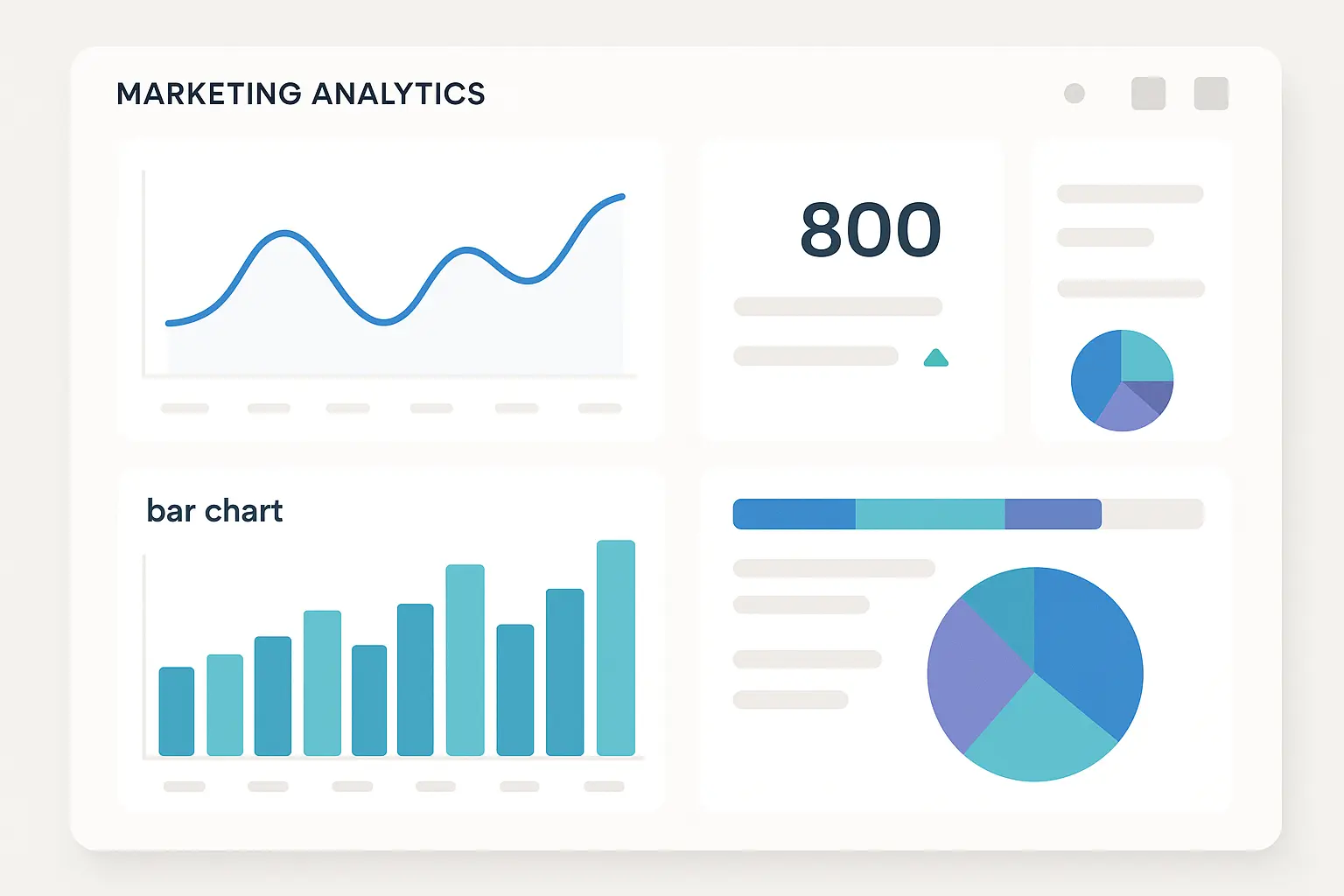
Table of Contents
-
Understanding the Foundation of Powerful Case Studies
-
Building Your Case Study Structure That Actually Converts
-
Strategic Implementation: From Planning to Execution
-
Optimization Strategies That Keep Delivering Results
-
Measuring Real Business Impact and ROI
-
Creating Compelling Documentation That Sells
TL;DR
-
Case studies that actually work need structured data collection, clear problems to solve, and results that connect directly to revenue (not just pretty charts)
-
Smart rollout approaches reduce risk while building internal confidence and showing early wins to skeptical executives
-
Continuous testing and workflow tweaking compound your initial success, creating long-term value that goes way beyond surface-level metrics
-
ROI analysis must include both direct revenue and operational efficiency gains – otherwise you’re only telling half the story
-
Actually talking to the people who use this stuff transforms boring performance data into compelling business stories
-
Getting Marketo to play nice with your existing systems creates unified customer views that enable sophisticated automation (when done right)
Understanding the Foundation of Powerful Case Studies
A well-crafted Marketo case study is basically your most credible marketing asset because it shows real-world results instead of theoretical promises that sound great in PowerPoint presentations. After writing dozens of these things and watching which ones actually get read (versus filed away forever), I’ve learned that the best case studies bridge the gap between what marketing automation can theoretically accomplish and what it actually delivers when real people are using it. They validate your strategies with concrete data while providing actionable insights that other businesses can steal and apply to their own customer acquisition efforts.
When developing case studies that actually move the needle, understanding how to calculate marketing ROI becomes essential for demonstrating tangible business value to stakeholders who control the budget.

Why Structure Makes or Breaks Your Case Study
The difference between a case study that gets passed around the C-suite and one that collects digital dust usually comes down to how well you organize your story. I’ve seen too many case studies that jump around between metrics without establishing clear cause-and-effect relationships – they read like someone threw data at a wall to see what stuck. A structured approach ensures you’re building a logical narrative that demonstrates how specific Marketo features solved real business problems that keep executives up at night.
According to “about 70% of marketers said marketing automation software is critical to their goals” CMSWire, which highlights why demonstrating clear value through structured case studies isn’t just nice to have – it’s essential for justifying these critical investments.
Crafting Executive Summaries That Hook Decision Makers
Your executive summary needs to deliver the most compelling information within the first few sentences because that’s often all the time you get with busy stakeholders. I’ve learned to focus on distilling the most impressive metrics, the primary challenge that was solved, and the ROI achieved into 2-3 paragraphs that immediately grab attention and make readers want to dig deeper instead of skimming to the conclusion.
Here’s the secret: lead with your strongest number. If Marketo helped increase qualified leads by 340%, that’s your opening line. Don’t bury it in paragraph three after explaining your company’s founding story in 1987. Decision makers scan for impact first, context second.
I once worked with a financial services company that opened their case study with “Marketo implementation reduced our customer acquisition cost by 45% while increasing qualified leads by 280% in just six months.” This immediately established credibility and business impact, compelling executives to read the full implementation details instead of forwarding it to their “maybe someday” folder.
Defining Challenges That Resonate With Your Audience
When I document the pre-Marketo disaster zone, I’m quantifying pain points that other businesses recognize in their own operations. Lead quality issues, attribution gaps, and campaign inefficiencies aren’t abstract concepts when you attach specific numbers that make people wince. This creates immediate relatability and establishes the necessity for marketing automation intervention.
I always include metrics like conversion rates, lead velocity, and customer acquisition costs from before implementation. These baseline numbers become the foundation for demonstrating improvement later in the case study – and trust me, without solid baselines, your success metrics look like marketing fairy tales.
|
Common Pre-Implementation Challenges |
Quantifiable Impact |
Marketo Solution Focus |
|---|---|---|
|
Manual lead scoring |
40-60% misqualified leads |
Automated scoring rules |
|
Disconnected campaign data |
25-35% attribution gaps |
Unified tracking system |
|
Generic email campaigns |
15-20% open rates |
Dynamic personalization |
|
Sales-marketing misalignment |
30-50% lead follow-up delays |
CRM integration |
|
Limited customer insights |
70% unknown buyer journey |
Behavioral tracking |
These aren’t theoretical numbers – this is what happened when real companies stopped guessing and started measuring.
Documenting Solution Architecture Without Losing Your Audience
Look, I get it – talking about “solution architecture” makes everyone’s eyes glaze over. But here’s what it really means: explaining exactly what you built and why, without drowning your readers in jargon soup. I’ve learned to balance specific Marketo feature descriptions with clear explanations of how those features addressed the identified challenges. The goal is showing readers exactly what was implemented while keeping the focus on business outcomes rather than technical specifications that only impress other marketers.
Integration touchpoints and workflow designs need documentation, but I present them in the context of solving specific problems. This approach helps readers understand what was done and why those particular solutions were chosen, instead of just listing every shiny feature you used.
Data Collection That Actually Tells a Story
Robust case studies depend on comprehensive data gathering across multiple touchpoints, but collecting data isn’t enough—you need to ensure attribution accuracy and extract meaningful insights that support your narrative. After seeing plenty of case studies fall flat because they couldn’t connect the dots, I’ve found that the most compelling ones combine quantitative metrics with qualitative insights that explain the human impact behind the numbers.
Effective data collection requires proper tracking implementation, which is why conducting a thorough GA4 audit ensures your analytics foundation supports accurate case study development and attribution modeling that actually holds up under scrutiny.

Establishing Baselines That Matter
Pre-implementation benchmarking is where most case studies either succeed or fail spectacularly. I capture existing conversion rates, lead velocity, customer acquisition costs, and engagement metrics to show improvement and demonstrate the scale of transformation that Marketo enabled. Without solid baseline data, your success metrics lack context and credibility – they’re just numbers floating in space.
The trick is identifying which metrics actually matter to your audience. Marketing qualified leads might impress marketers, but executives care more about pipeline influence and revenue attribution. Know your audience, measure what they care about.
Multi-Touch Attribution That Reveals the Real Story
Implementing proper attribution models within Marketo ensures you’re giving credit where it’s actually due rather than relying on last-touch attribution that misses the complexity of modern buyer journeys. I’ve seen case studies lose all credibility because they couldn’t accurately connect marketing activities to business outcomes, making their ROI calculations about as reliable as a weather forecast.
Multi-touch attribution provides clearer insights into campaign effectiveness and helps identify which touchpoints actually drive conversions versus which ones just happened to be there at the end. This level of detail makes your case study more valuable to readers who want to understand the mechanics behind your success, not just admire the final numbers.
Success Metrics That Actually Drive Decisions
Defining success metrics upfront ensures your case study demonstrates tangible business impact rather than vanity metrics that look impressive in presentations but don’t connect to revenue. I focus on metrics that executives care about—pipeline generation, deal acceleration, and closed-won revenue—because these create the most compelling evidence for continued marketing automation investment, even when budgets get tight.
Connecting Activities to Revenue Impact
Here’s the part your CFO actually cares about – the money. The most powerful section of any Marketo case study is where you draw direct lines between platform activities and revenue outcomes. I quantify pipeline influence, opportunity acceleration, and closed-won revenue that can be directly attributed to Marketo campaigns because these metrics provide concrete ROI figures that justify marketing automation investment to even the most skeptical stakeholders who think marketing is just “expensive coloring.”
Revenue impact quantification requires careful tracking and attribution, but it’s what transforms a case study from an interesting story into a compelling business case for similar implementations.
Building Your Case Study Structure That Actually Converts
Creating case studies that drive business decisions requires more than documenting what happened—you need to craft narratives that demonstrate clear cause-and-effect relationships while maintaining credibility through specific metrics and actionable insights. After watching too many technically accurate case studies get ignored because they read like instruction manuals, I’ve learned that the most effective ones balance technical detail with business impact, making complex implementations accessible to diverse audiences while maintaining authenticity.
Major enterprises are finally waking up to the strategic value of marketing automation integration. “Prudential Financial partnered with Adobe to implement a comprehensive content supply chain solution” leveraging Marketo Engage alongside other Adobe Experience Cloud tools, demonstrating how enterprise organizations are building sophisticated marketing technology stacks for competitive advantage instead of just buying tools and hoping for the best.
Phased Rollout Strategies That Minimize Risk
Smart rollout approaches allow organizations to build competency gradually while demonstrating early wins that justify continued investment in marketing automation capabilities. I’ve found that starting small and scaling based on proven success creates more compelling case studies than attempting comprehensive implementations that risk overwhelming teams and diluting results into meaningless averages.
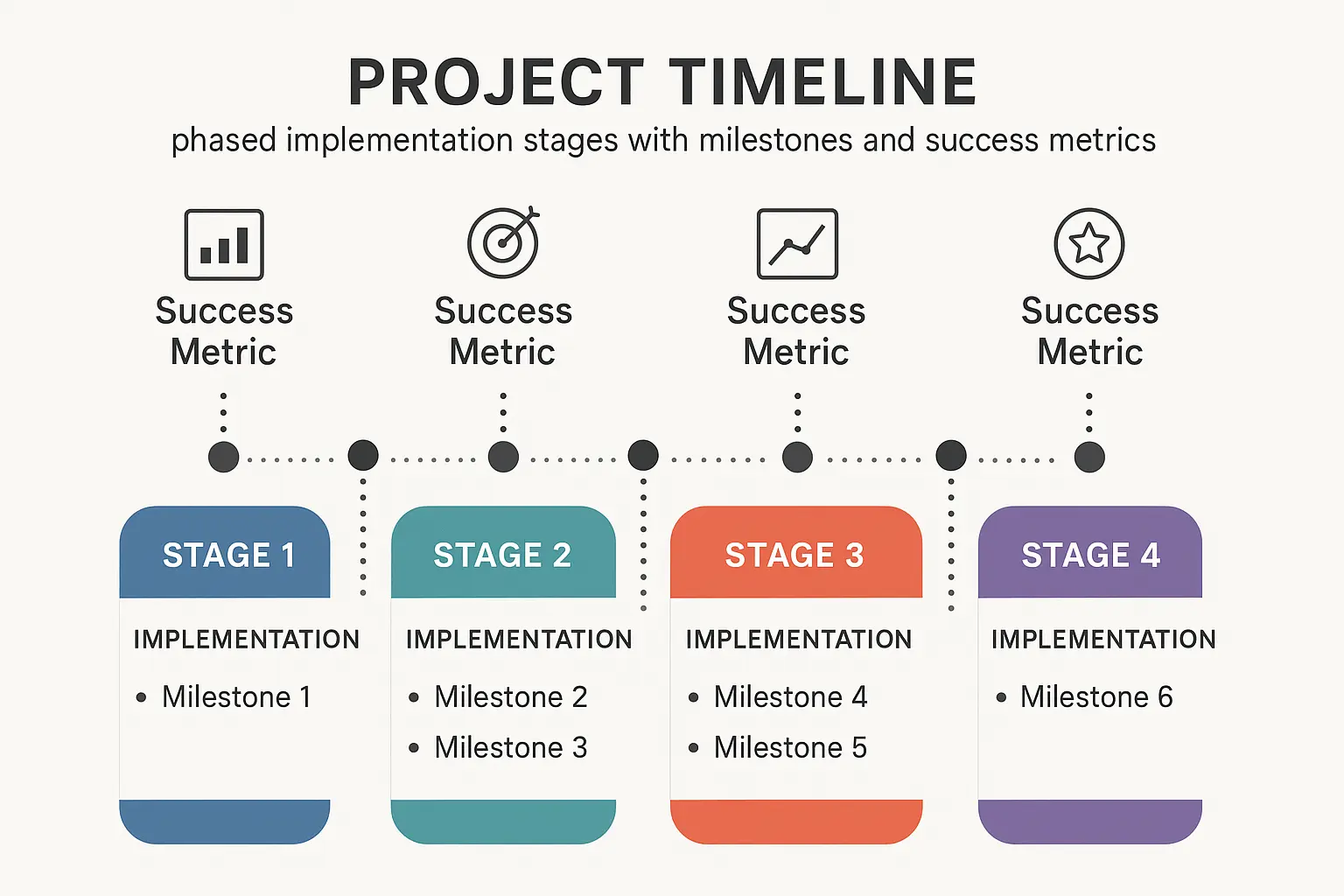
Designing Pilot Programs That Set You Up for Success
Starting with a focused use case or specific audience segment allows teams to master core functionality before expanding scope, which reduces risk and builds internal confidence. I recommend choosing pilot programs that can demonstrate clear value within 90 days because early wins create momentum for broader adoption and provide concrete evidence for case study development – plus they keep impatient executives from pulling the plug.
The best pilot programs focus on high-impact, low-complexity use cases that showcase Marketo’s capabilities without requiring extensive integrations or complex workflows that take six months to debug. Email nurture campaigns or lead scoring implementations often work well because they deliver measurable results quickly and don’t require a PhD in marketing automation to understand.
Pilot Program Selection Checklist:
-
Clear success metrics defined upfront (none of this “we’ll figure it out later” nonsense)
-
Limited scope (single product line or audience segment)
-
90-day timeline for initial results
-
Minimal technical dependencies
-
Strong internal champion identified (someone who actually cares about success)
-
Baseline performance data captured
-
User training plan established
Scaling Based on Proven Results
Successful pilot outcomes inform broader rollout strategies, including additional audience segments, advanced automation workflows, and integration with additional business systems. I document how initial success metrics guided expansion decisions because this demonstrates strategic thinking and provides a roadmap that other organizations can follow without reinventing the wheel.
Scaling strategies need to balance ambition with practicality. Each expansion phase should build on previous successes while introducing new capabilities that address additional business challenges – not just adding complexity for complexity’s sake.
Here’s a real example: A SaaS company started with a simple email nurture campaign for trial users, achieving 35% improvement in trial-to-paid conversions. This success justified expanding to multi-touch attribution across their entire customer lifecycle, ultimately improving overall customer acquisition efficiency by 60%. They didn’t try to boil the ocean on day one.
Managing Change Without Losing Your Team
Addressing organizational resistance through training, clear communication, and demonstrating quick wins ensures user adoption and maximizes the platform’s potential impact on business outcomes. I’ve seen technically successful implementations fail because they didn’t account for human factors – people don’t like change, especially when it makes their jobs harder initially. Change management becomes a critical component of compelling case studies.
User adoption metrics often tell a more complete story than technical performance metrics alone. High adoption rates indicate that the implementation solved real problems for actual users, rather than theoretical business challenges that only existed in strategy documents.
Integration Architecture That Creates Unified Experiences
Look, I get it – talking about “integration architecture” makes everyone’s eyes glaze over. But here’s what it really means: getting all your marketing tools to actually talk to each other instead of living in their own little silos, creating a unified view of customer interactions while enabling sophisticated automation workflows. I focus on documenting integration approaches that other organizations can actually replicate, including specific protocols and data flow designs that ensure attribution accuracy and operational efficiency.
When documenting integration architectures, leveraging advanced analytics for strategic growth helps organizations understand how unified data systems contribute to comprehensive business intelligence and decision-making capabilities that go beyond just pretty dashboards.
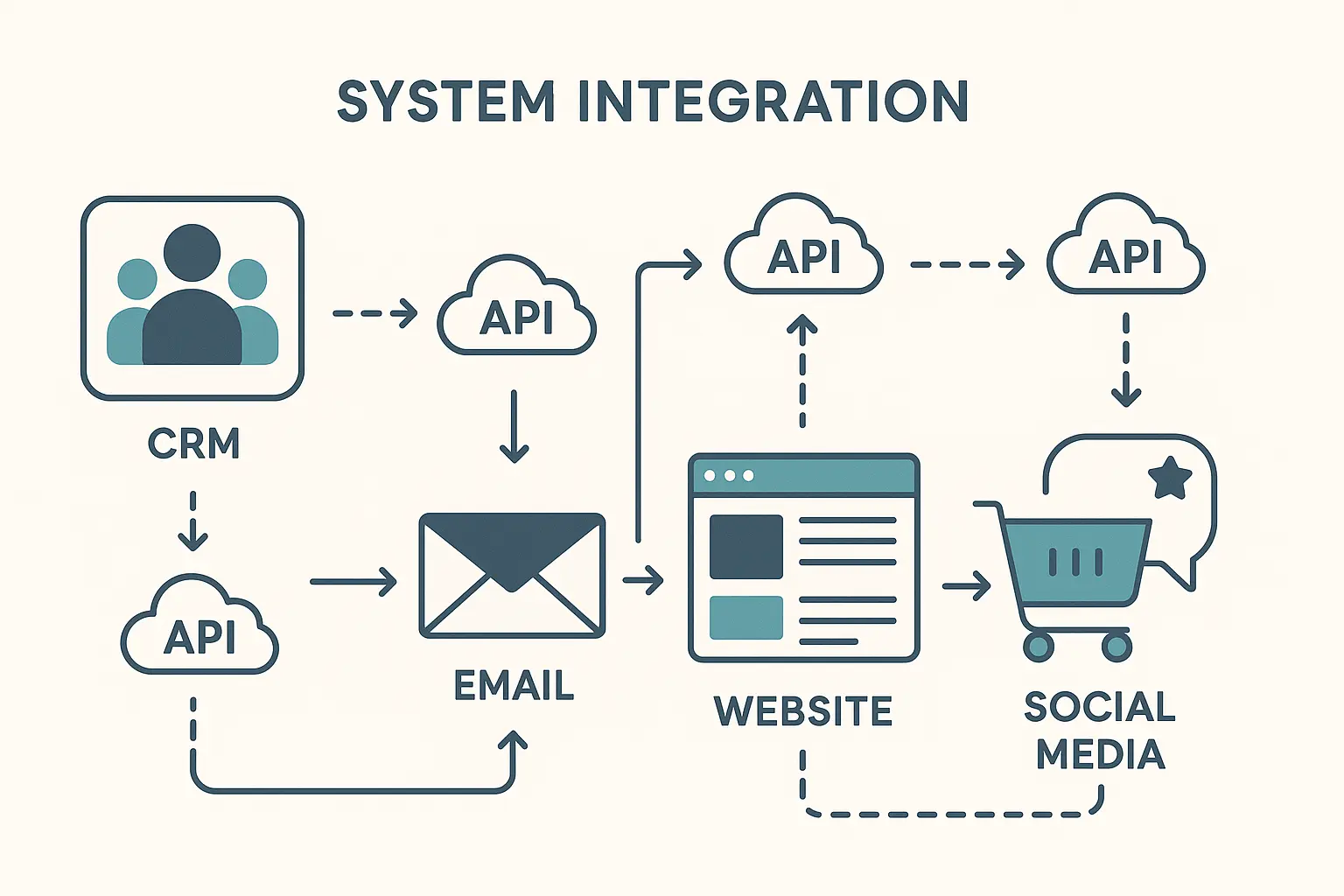
CRM Synchronization That Maintains Data Integrity
Establishing bidirectional data sync rules between Marketo and CRM systems ensures lead scoring, qualification, and handoff processes maintain data integrity and attribution accuracy. I document specific synchronization protocols because data quality issues can undermine even the most sophisticated marketing automation strategies – and trust me, explaining why your leads disappeared into a black hole is not a conversation you want to have with sales leadership.
The key is defining clear rules for data ownership, update priorities, and conflict resolution before implementation begins. These protocols become critical documentation for case studies because they demonstrate thoughtful planning and execution rather than just winging it and hoping everything works out.
Marketing Stack Connectivity That Amplifies Results
Connecting Marketo with analytics platforms, advertising tools, and content management systems creates comprehensive campaign tracking and enables advanced personalization capabilities. I highlight specific integrations that delivered measurable business value because these connections often differentiate successful implementations from basic platform deployments that just send prettier emails.
Integration architecture documentation helps readers understand how Marketo fits into broader marketing technology ecosystems and provides actionable guidance for their own implementations instead of just theoretical best practices.
According to “Marketo achieved 46% lift in click-thru rates on LinkedIn and 30% lift in total engagement” Bombora through strategic intent data integration, demonstrating how connected marketing stacks amplify performance across multiple channels instead of creating more work for already overwhelmed marketing teams.
Strategic Implementation: From Planning to Execution
Successful Marketo implementations require careful planning, phased rollouts, and continuous optimization based on performance data and user feedback to maximize platform ROI and user adoption. After seeing plenty of implementations crash and burn because they tried to do everything at once, I’ve discovered that the most compelling case studies showcase not just final results but the strategic thinking and systematic approach that made those results possible.
A/B Testing Frameworks That Drive Continuous Improvement
Systematic testing approaches within Marketo enable data-driven optimization of email campaigns, landing pages, and automation workflows to continuously improve conversion rates. I document specific testing methodologies because they demonstrate commitment to optimization and provide actionable frameworks that other organizations can implement immediately – instead of just saying “test everything” and hoping for the best.
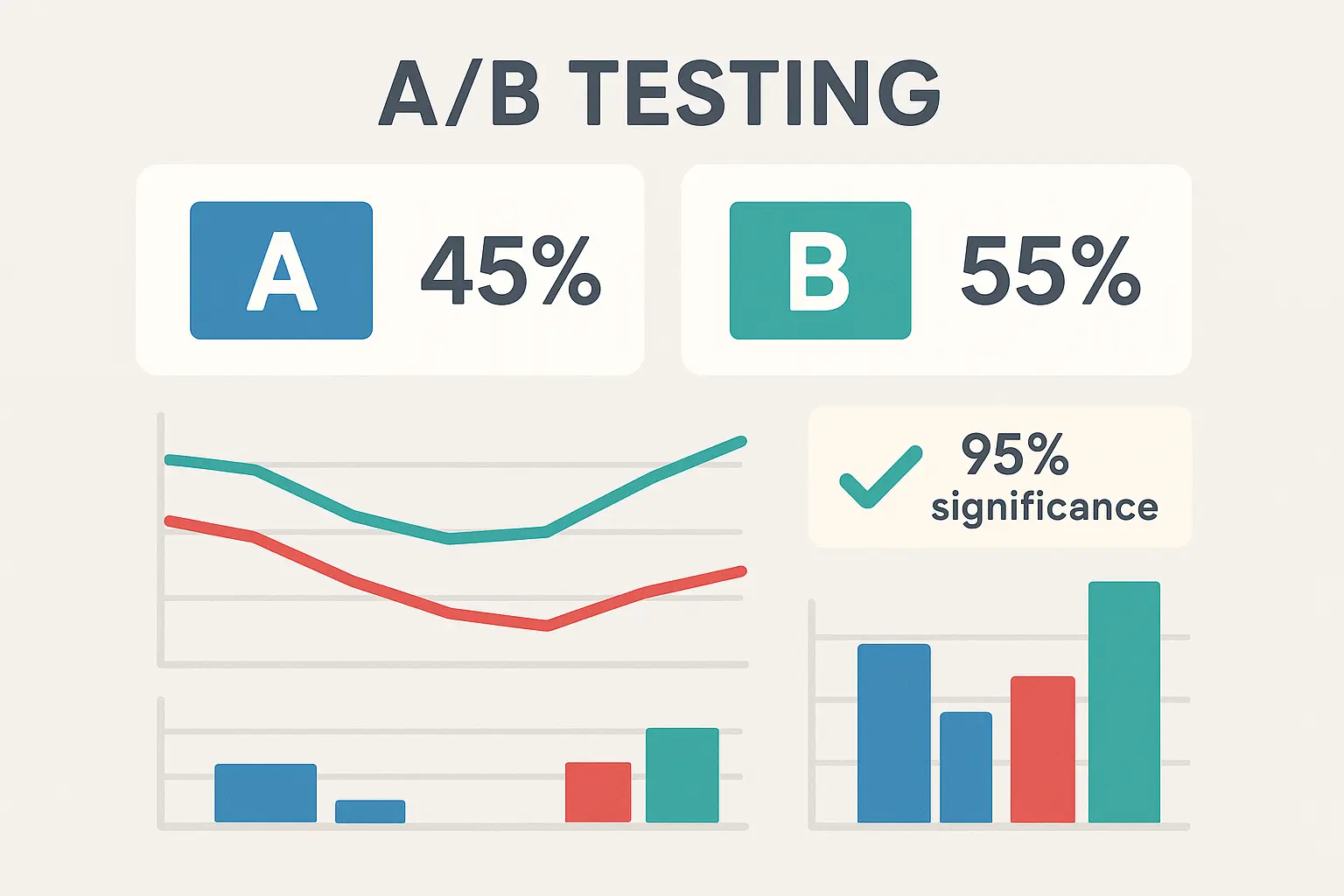
Campaign Element Testing That Moves the Needle
Testing subject lines, send times, content variations, and call-to-action placement provides actionable insights for improving engagement rates and conversion performance across all marketing channels. I focus on tests that delivered statistically significant improvements because these provide concrete evidence of optimization value while offering specific tactics that readers can steal and apply to their own campaigns.
Here’s what nobody tells you about testing – some of the most valuable insights come from unexpected results. When a seemingly minor change delivers major improvements, that becomes a compelling story element that demonstrates the power of systematic optimization over gut-feeling marketing decisions.
Developing effective testing strategies requires understanding how to measure performance accurately, which is why calculating return on ad spend (ROAS) helps determine which campaign elements generate the highest return on investment instead of just looking pretty in reports.
|
Test Element |
Typical Impact Range |
Best Practice |
Statistical Significance |
|---|---|---|---|
|
Subject Lines |
15-25% open rate improvement |
Personalization + urgency |
95% confidence minimum |
|
Send Times |
10-20% engagement lift |
Industry-specific optimization |
7-day test minimum |
|
CTA Placement |
20-40% click improvement |
Above fold positioning |
Multi-variant testing |
|
Content Length |
5-15% conversion impact |
Audience-specific testing |
Segment-based analysis |
|
Personalization |
25-50% engagement boost |
Behavioral triggers |
Long-term cohort tracking |
These aren’t theoretical numbers – this is what happened when real companies stopped guessing and started testing systematically.
Workflow Optimization That Eliminates Bottlenecks
Analyzing automation workflow performance identifies bottlenecks, drop-off points, and optimization opportunities that can significantly improve lead progression and sales qualification rates. I document specific workflow improvements because they show how continuous optimization compounds initial success and creates long-term value beyond surface-level metrics that look good in quarterly reports.
Workflow optimization often reveals insights about buyer behavior that inform broader marketing strategies. These discoveries become valuable case study content because they demonstrate how marketing automation provides strategic insights, not just operational efficiency that saves time on manual tasks.
Advanced Personalization That Accelerates Buyer Journeys
Leveraging Marketo’s dynamic content and behavioral triggers creates highly personalized experiences that improve engagement rates and accelerate buyer journey progression. I highlight specific personalization strategies that delivered measurable results because these tactics often differentiate high-performing implementations from basic automation deployments that just blast everyone with the same generic content.
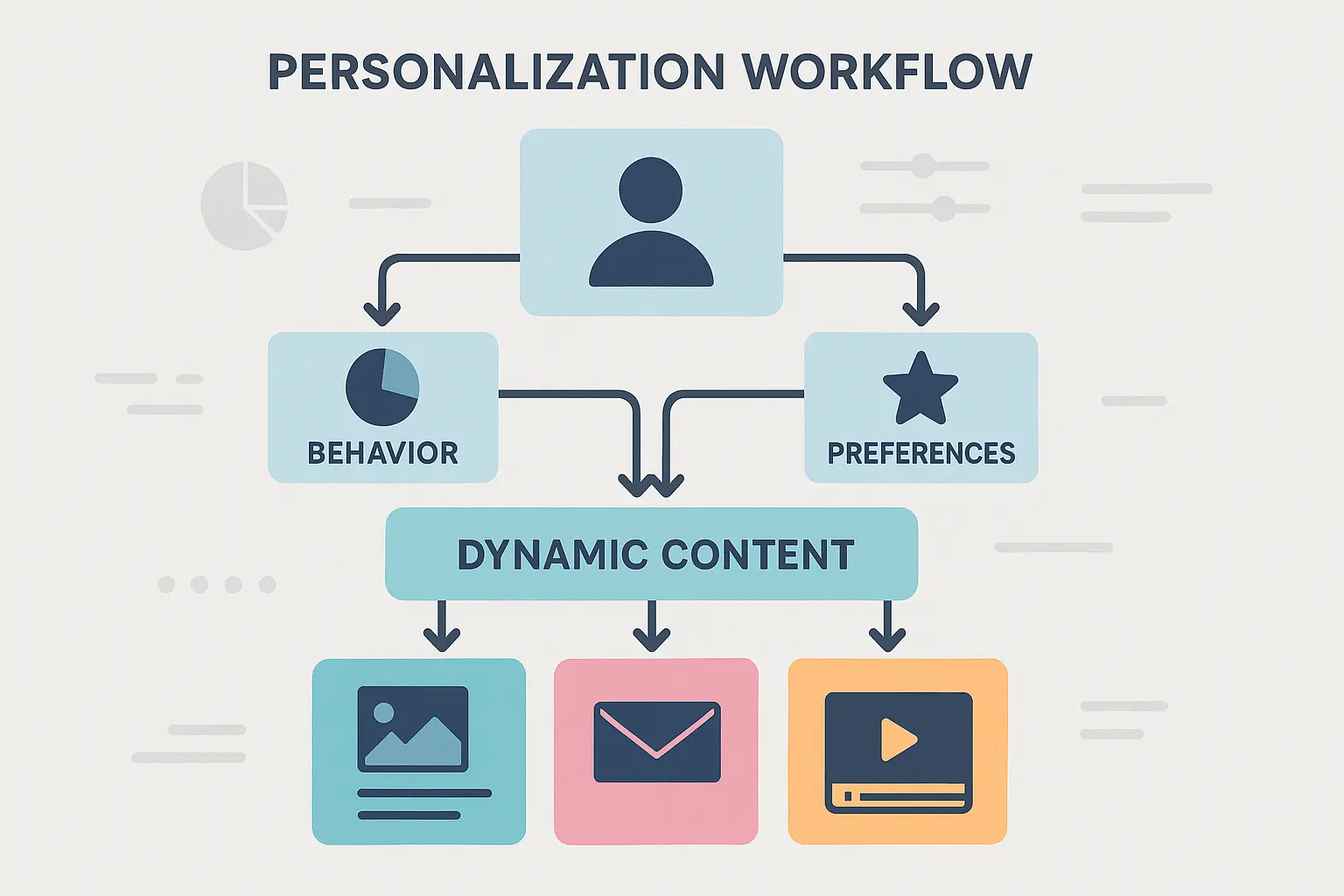
Behavioral Trigger Implementation That Delivers Timely Relevance
Setting up sophisticated behavioral triggers based on website activity, email engagement, and content consumption patterns enables timely, relevant communication that moves prospects through the sales funnel more effectively. I document trigger logic and resulting performance improvements because these details help readers understand how to implement similar strategies in their own organizations instead of just admiring the results from afar.
Behavioral triggers often produce the most impressive engagement improvements, making them compelling focal points for case study narratives. The key is connecting trigger implementation to business outcomes rather than just engagement metrics that make marketers feel good but don’t impact the bottom line.
Here’s a real example that worked: A technology company implemented behavioral triggers that detected when prospects downloaded multiple whitepapers within 48 hours, automatically routing these high-intent leads to inside sales for immediate follow-up. This simple automation increased sales-qualified lead conversion by 85% and reduced average sales cycle time by 23 days. Sometimes the simplest ideas deliver the biggest impact.
Optimization Strategies That Keep Delivering Results
Here’s what nobody tells you about optimization – it’s not about running one test and calling it done. The best Marketo case studies showcase how ongoing optimization efforts compound initial success, demonstrating the platform’s ability to evolve with changing business needs and market conditions. I’ve learned that the most valuable case studies don’t just document initial implementation success—they show how continuous improvement creates sustained competitive advantages and long-term ROI growth that keeps justifying the investment.
The marketing automation landscape keeps evolving as major acquisitions reshape the industry. “Adobe acquired Marketo for $4.8 billion after Vista Equity Partners increased its value from $1.8 billion” AdExchanger, demonstrating how strategic optimization and integration capabilities drive significant valuation increases in marketing technology platforms – and why your optimization efforts actually matter for long-term value.
Performance Analysis That Reveals Hidden Opportunities
Regular performance analysis uncovers optimization opportunities that aren’t obvious from surface-level metrics. I document specific analysis methodologies and resulting improvements because they demonstrate how data-driven decision making creates ongoing value beyond initial implementation success – and honestly, this is where the magic happens once you get past the initial setup phase.
Performance analysis often reveals unexpected patterns in customer behavior or campaign effectiveness. These discoveries become compelling case study elements because they show how marketing automation provides strategic insights that inform broader business decisions, not just tactical campaign improvements.
Performance Analysis Framework:
-
Weekly campaign performance reviews (not just checking if things are broken)
-
Monthly cohort analysis by acquisition channel
-
Quarterly attribution model assessment
-
Bi-annual customer journey mapping updates
-
Continuous A/B test result documentation
-
Real-time alert setup for performance anomalies
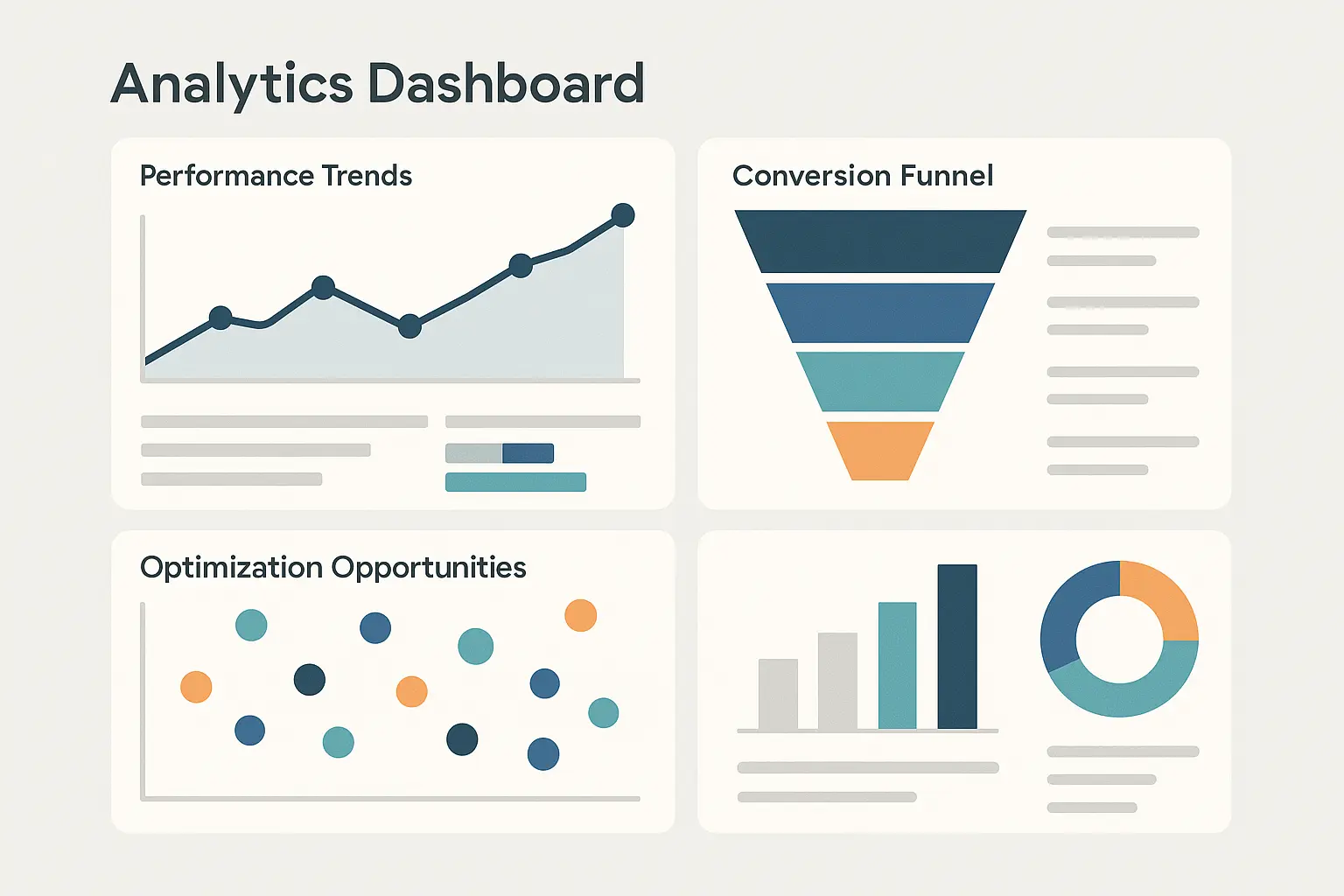
Segmentation Strategies That Improve Relevance
Advanced segmentation based on behavioral data, engagement patterns, and lifecycle stage enables more targeted communication that improves conversion rates and customer experience. I highlight specific segmentation approaches that delivered measurable improvements because these strategies often differentiate sophisticated implementations from basic automation deployments that treat everyone the same.
Effective segmentation requires balancing granularity with operational efficiency. The most successful approaches create meaningful audience distinctions without overwhelming marketing teams with excessive complexity that requires a dedicated data scientist to manage.
Companies implementing advanced segmentation strategies report “365% YoY increase in the number of people engaged and 94% Net positive sentiment for media and social media mentions” Bombora, proving that targeted approaches deliver both engagement and brand perception improvements instead of just higher open rates that don’t translate to business value.
Measuring Real Business Impact and ROI
Here’s the part your CFO actually cares about – the money. And no, I’m not talking about vanity metrics that make your marketing team feel good. Comprehensive ROI analysis in Marketo case studies goes beyond surface-level metrics to demonstrate true business value through improved efficiency, revenue attribution, and long-term customer value optimization. I’ve found that the most compelling case studies present complete financial pictures that include both direct revenue impact and operational efficiency gains that show up on the bottom line.
When measuring comprehensive business impact, understanding how to properly calculate ROI ensures your case study presents accurate financial justifications that resonate with executives and decision-makers who control marketing budgets.
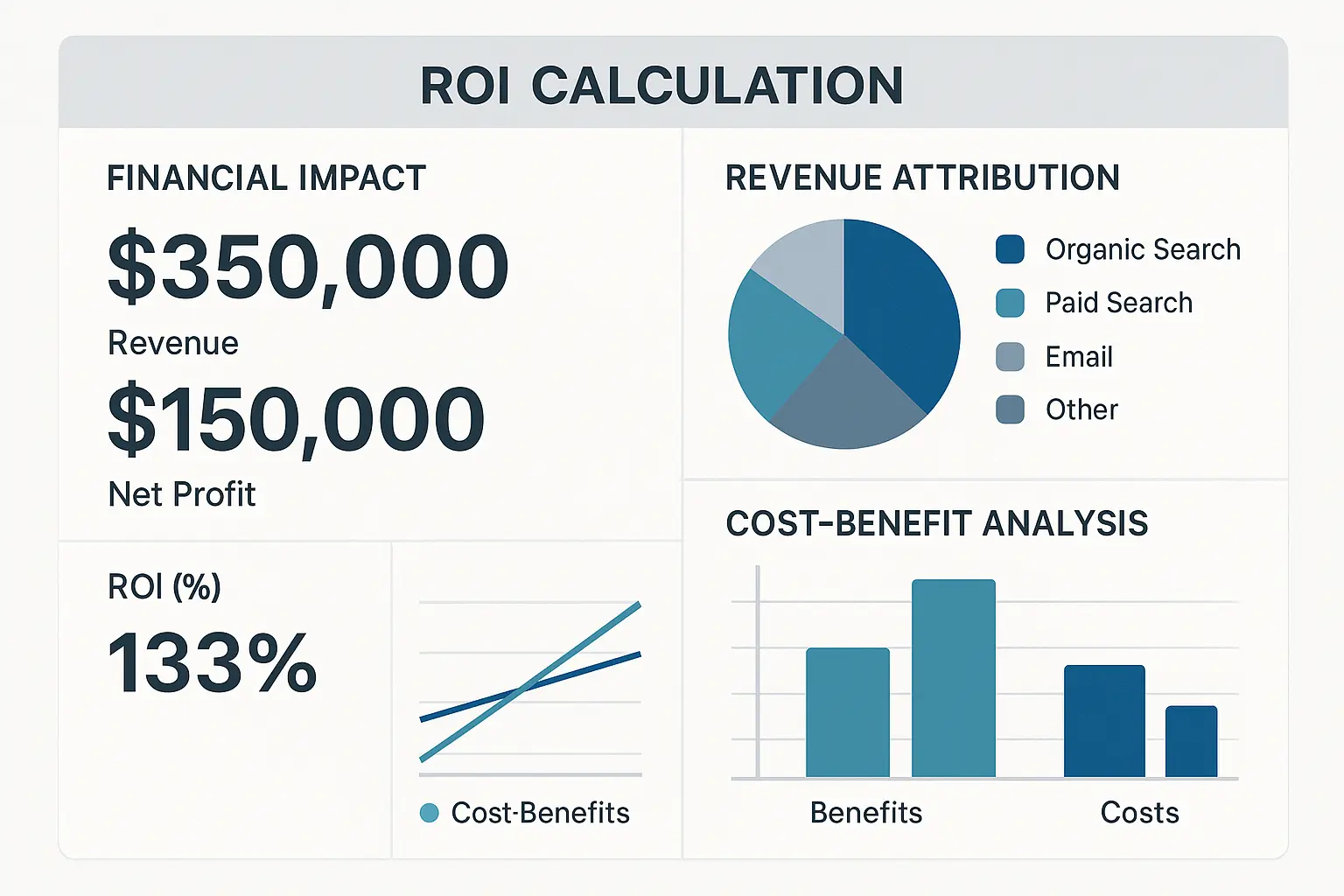
Financial Impact Calculation That Tells the Complete Story
Accurate financial impact assessment requires tracking both direct revenue attribution and operational efficiency gains to present a complete picture of Marketo’s business value. I focus on metrics that CFOs and executives care about because these stakeholders ultimately approve marketing automation investments and expansion decisions – and they don’t care how pretty your dashboards look.
Direct Revenue Attribution That Proves ROI
Calculating pipeline influence, opportunity acceleration, and closed-won revenue directly attributable to Marketo campaigns provides concrete ROI figures that justify marketing automation investment. I document specific attribution methodologies because accurate revenue tracking often determines whether case studies are perceived as credible business evidence or marketing fluff that gets filed away forever.
Revenue attribution requires careful tracking and clear definitions of what constitutes “influenced” versus “sourced” opportunities. These distinctions matter for credibility and help readers understand how to implement similar tracking in their own organizations without getting lost in attribution modeling complexity.
Operational Efficiency Gains That Reduce Costs
Quantifying time savings from automation, improved lead quality scores, and reduced manual processes demonstrates cost avoidance benefits that complement direct revenue impact. I calculate specific efficiency improvements because these benefits often exceed direct revenue attribution in total value, especially during the first year of implementation when you’re still building momentum.
Efficiency gains include reduced time spent on manual tasks, improved lead qualification accuracy, and faster campaign deployment cycles. These improvements create ongoing value that compounds over time – and they’re often easier to measure than complex revenue attribution models.
Long-term Value Projection That Justifies Continued Investment
Projecting future value based on established performance trends, improved customer lifetime value, and scalability benefits provides stakeholders with compelling investment justification for continued platform utilization. I include forward-looking analysis because it demonstrates strategic thinking and helps readers understand the long-term potential of their own implementations beyond just year-one results.
Long-term projections need to be based on actual performance data rather than theoretical improvements that sound good in presentations. Conservative estimates maintain credibility while still demonstrating significant potential value that justifies ongoing investment.
Creating Compelling Documentation That Sells
The actual creation process of Marketo case studies involves systematic documentation, stakeholder interviews, and narrative development that transforms raw data into compelling business stories. After writing dozens of these things and watching which ones actually get shared versus buried in digital folders, I’ve learned that the most effective case studies balance technical credibility with engaging storytelling, making complex implementations accessible to diverse audiences while maintaining authenticity through specific examples and measurable results.
Stakeholder Interview Strategies That Capture the Full Story
Effective case studies require input from multiple stakeholders to capture the complete picture of challenges, implementation decisions, and business impact. I conduct structured interviews with end users, marketing managers, and executives because each perspective provides unique insights that contribute to a comprehensive narrative – and honestly, this is where the real stories live, not in spreadsheets.

Customer Success Story Development That Resonates
When I’m interviewing people for case studies, I’ve learned that the magic happens when you stop asking corporate-speak questions and start asking things like “What made you want to throw your laptop out the window?” and “What surprised you the most?” Conducting structured interviews with end users, marketing managers, and executives captures both quantitative results and qualitative insights about user experience and business transformation that you can’t get from analytics dashboards.
The best customer stories include both expected outcomes and unexpected benefits. These surprises often become the most compelling elements of case study narratives because they demonstrate value beyond initial implementation goals – like discovering that your lead scoring model also improved sales team morale because they stopped chasing dead-end prospects.
Stakeholder Interview Template:
-
Pre-implementation challenges and pain points (get specific – “our leads sucked” is more honest than “lead quality optimization opportunities”)
-
Decision-making process and evaluation criteria
-
Implementation timeline and key milestones
-
Unexpected obstacles and how they were overcome
-
Quantifiable results and business impact
-
User adoption and change management insights
-
Lessons learned and recommendations for others
Internal Team Perspective That Provides Implementation Insights
Documenting the implementation team’s challenges, lessons learned, and optimization discoveries provides valuable context for other organizations considering similar Marketo deployments. I include specific implementation details because they help readers understand what to expect and how to avoid common pitfalls that can derail even well-planned projects.
Internal perspectives often reveal practical insights that aren’t obvious from performance metrics alone. These operational details make case studies more actionable for readers planning their own implementations instead of just inspiration porn that looks good but provides no practical guidance.
Content Creation That Balances Technical Detail With Business Impact
Transforming collected data into engaging narratives requires balancing technical detail with business impact while maintaining credibility through specific metrics and outcomes. I structure content to serve both technical evaluators who need implementation details and business stakeholders who care primarily about results and ROI – because both audiences need to buy in for implementations to succeed.
Visual Data Presentation That Clarifies Complex Information
Creating compelling charts, graphs, and infographics that illustrate performance improvements makes complex data accessible to diverse audiences while reinforcing key success metrics. I use visual elements strategically to highlight the most important improvements and make data-heavy sections more digestible for busy readers who are scanning for key takeaways.
Visual presentation becomes especially important when documenting multi-channel campaigns or complex attribution models. Clear graphics can communicate relationships and improvements that might be difficult to explain in text alone – and they make your case study more likely to get shared in executive presentations.
Technical Implementation Details That Enable Replication
Including specific Marketo feature configurations, integration approaches, and workflow designs provides actionable insights for readers planning similar implementations. I balance technical detail with accessibility, ensuring that both technical evaluators and business stakeholders can extract value from the documentation without getting overwhelmed by platform-specific jargon that only impresses other Marketo experts.
Technical details work best when they’re presented in the context of solving specific business problems. Rather than listing every feature used, I focus on configurations that directly contributed to measurable outcomes – because nobody cares about your technical prowess if it didn’t move the business forward.
Outcome Storytelling That Maintains Authenticity
Crafting compelling before-and-after narratives that highlight transformation while maintaining authenticity through specific examples and measurable results requires careful attention to both emotional impact and factual accuracy. I structure outcome stories to show progression over time rather than just final results, which helps readers understand the realistic timeline for achieving similar improvements in their own organizations.
Authentic storytelling includes challenges and setbacks alongside successes. These honest details actually increase credibility because they acknowledge the reality of complex implementations while demonstrating how obstacles were overcome – because everyone knows that nothing ever goes perfectly according to plan.
Final Thoughts
Look, I’ve written a lot of case studies over the years. The ones that actually move the needle aren’t the ones with the fanciest charts or the most buzzwords. They’re the ones that tell honest stories about real problems getting solved by real people. Creating effective Marketo case studies isn’t about documenting what happened—it’s about crafting narratives that demonstrate clear value while providing actionable insights for other organizations.
Your prospects don’t need another marketing automation fairy tale – they need proof that someone like them figured it out and lived to tell about it. I’ve found that the most valuable case studies evolve beyond simple success stories to become strategic resources that inform future implementations and optimization efforts. They validate marketing automation investments while providing practical guidance that helps other organizations avoid common pitfalls and accelerate their own success.
The key is maintaining focus on business outcomes rather than platform features. While technical details matter for implementation guidance, the primary value comes from demonstrating how marketing automation solves real business problems and delivers measurable ROI that shows up on financial statements, not just marketing dashboards.
When you’re ready to transform your Marketo performance data into compelling case studies that drive business decisions, The Marketing Agency’s data-driven approach can help you extract maximum value from your marketing automation investments. Our systematic methodology ensures your success stories become powerful sales tools that demonstrate not just what happened, but why it worked and how it can be replicated for continued growth.
Ready to stop writing case studies that put people to sleep? Let’s talk about turning your Marketo wins into stories that actually sell. Because honestly, your results deserve better than a boring PDF that gets buried in someone’s downloads folder.



